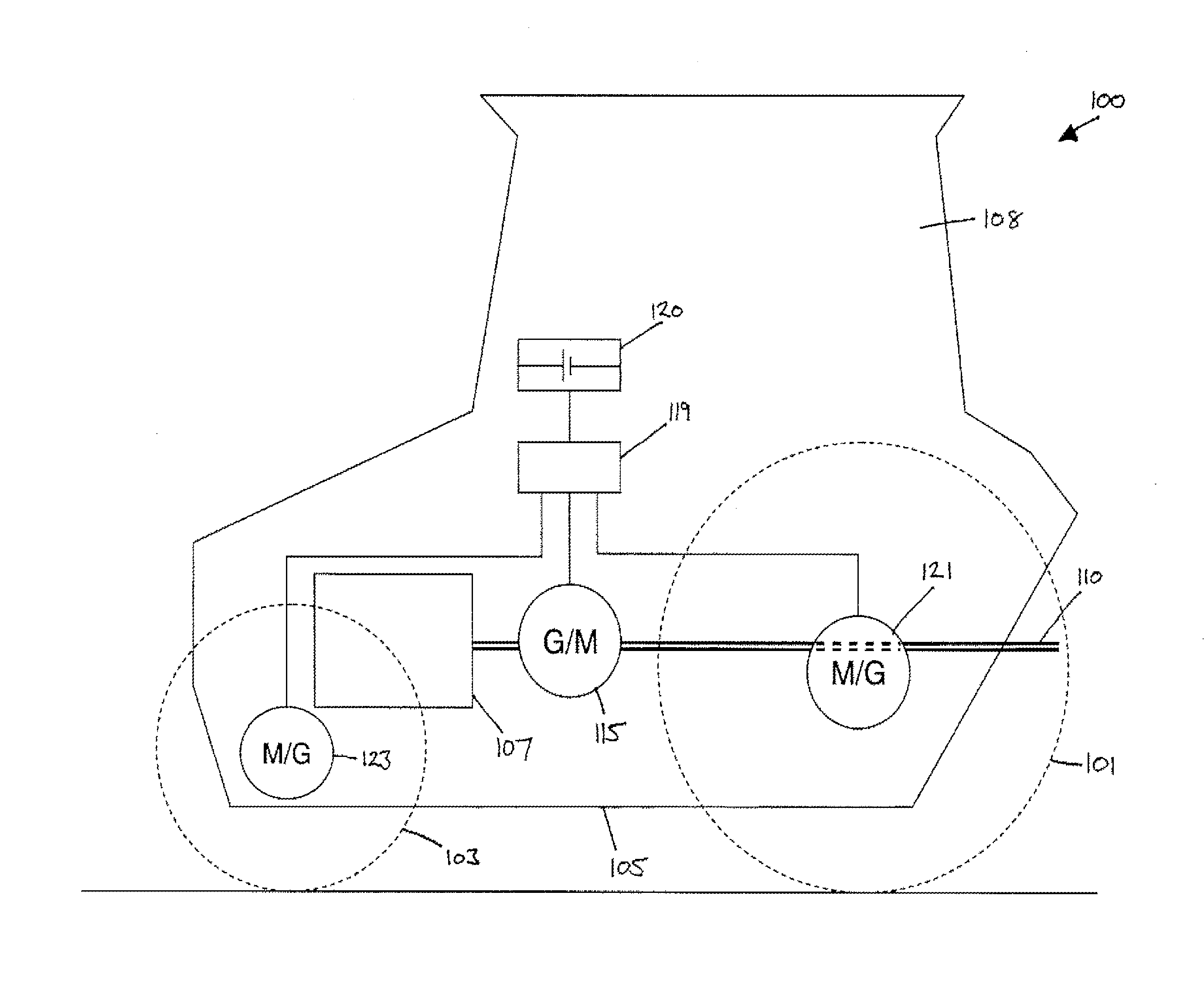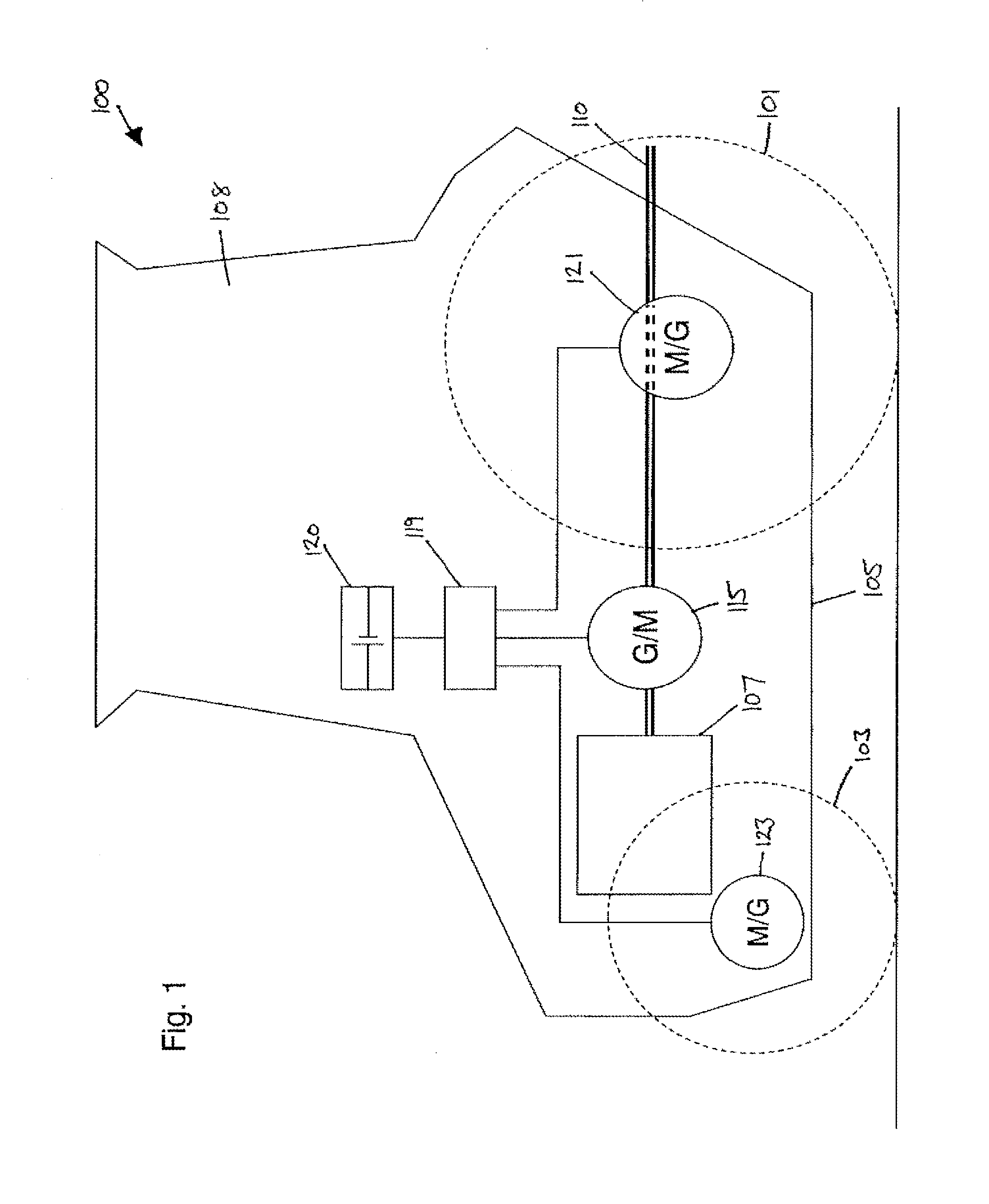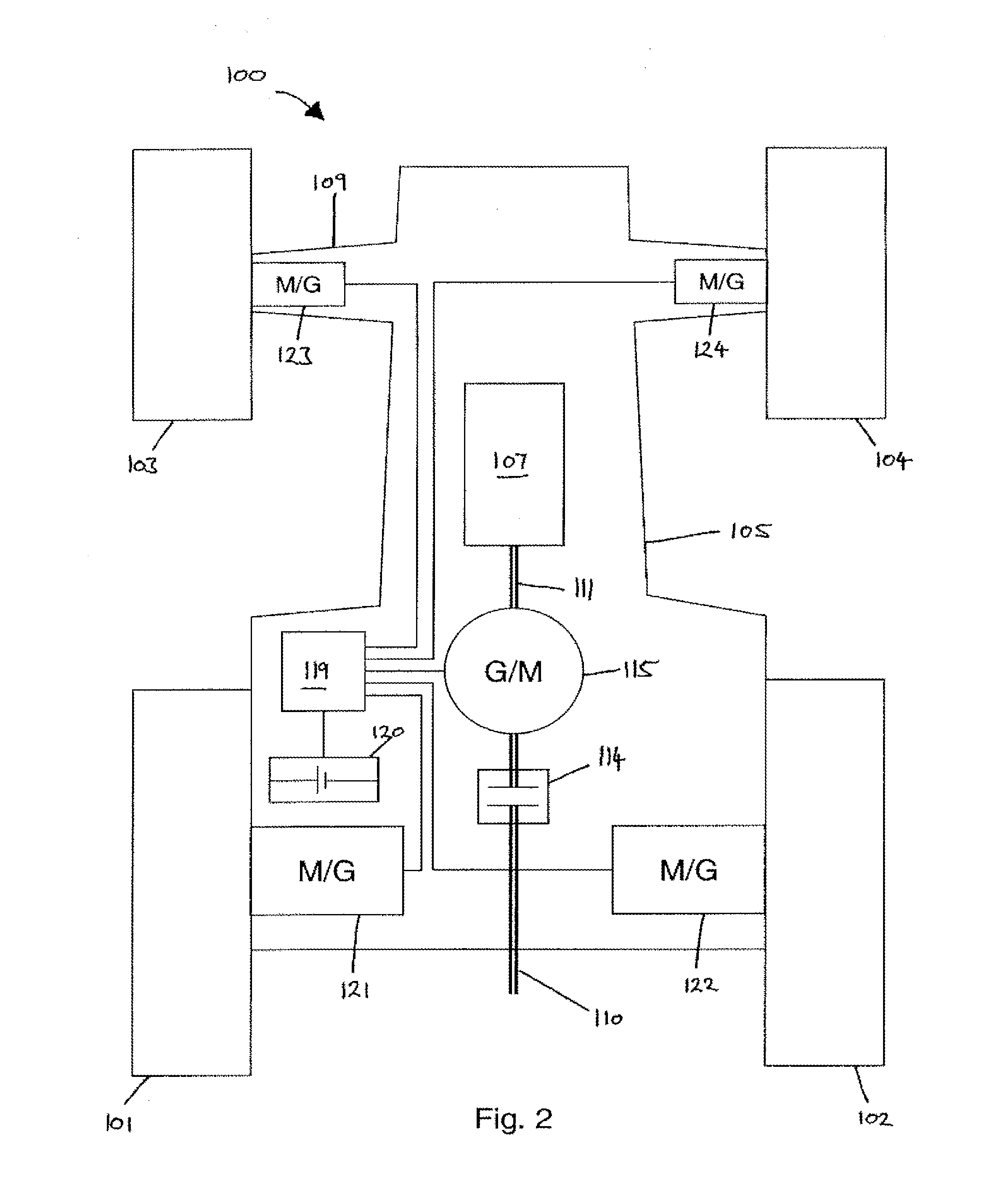Tractor with Hybrid Power System
a hybrid power system and tractor technology, applied in the field of agricultural tractors, can solve the problems of inability to downsize the engine, the hybrid technology approach cannot be directly applied to the application of the tractor, etc., and achieve the effects of reducing the stress on the associated electric motor, improving the control of the torque applied, and improving the control of the traction during operation
- Summary
- Abstract
- Description
- Claims
- Application Information
AI Technical Summary
Benefits of technology
Problems solved by technology
Method used
Image
Examples
first embodiment
[0063]FIG. 6 shows an alternative modification to which the same or similar parts will not be described any further. The tractor 300 comprises a disengageable mechanical drive connection between the two rear propulsion motor / generators 121,122. The disengageable drive connection comprises a shaft 327 and a clutch 328. This additional drive connection can be selectively engaged by the driver by appropriate control of clutch 328 to provide a mechanical lock between the propulsion drives of the two rear wheels 101,102. This simulates a rear differential lock present on existing tractors and serves to deliver power from both associated motors during periods of unbalanced traction.
[0064]A further adaption of the first embodiment is shown in FIG. 7 in the form of fourth embodiment. In this case the front propulsion motor / generators 123,124 are replaced by a single front propulsion motor / generator 429, the torque generated by which is distributed to the front wheels 103,104 via a front dif...
sixth embodiment
[0066]The tractor 600 in accordance with the invention shown in FIG. 9 utilizes a single front propulsion motor / generator 429 (as described above in relation to FIG. 7) in combination with a rear propulsion motor / generator 533 (as described above in relation to FIG. 8). Advantageously, the arrangement shown in FIG. 9 requires only two motor / generator modules for propulsion of the tractor 600 whilst still delivering four wheel drive.
[0067]In a further modified arrangement tractor 700 shown in FIG. 10 delivers a propulsion force to all four wheels 101-104 from a single propulsion motor / generator 737, the torque generated by which is distributed to the front and rear differential gearboxes 430, 534 via a torsen, or torque sensitive differential unit 738. Alternatively, a conventional or limited slip clutch may be used. Although shown offset from the longitudinal centre line of the tractor 700, the torsen 738 and / or the propulsion motor / generator 737 may be located centrally on the trac...
eighth embodiment
[0068]With reference to FIG. 11, the invention is shown in the form of a tractor 800. As in previously described embodiments, the tractor 800 comprises an engine 107 drivingly connected to a PTO shaft 110 via a PTO clutch 114. A first motor / generator 115 is drivingly connected to the driveshaft 111 running from the engine 117. Electrical energy generated by the first motor / generator 115 is conveyed to power control unit 119 for distribution to a single propulsion motor / generator 839 or to battery 120.
[0069]Propulsion motor / generator 839 is drivingly connected to a first input / output of an epicyclic gearbox 840. Driveshaft 111 is drivingly connected to a second input / output of the epicyclic gearbox 840 via meshed gears 841, 842, 843. The torque generated by the drive shaft 111 is summed with the torque generated by the propulsion motor / generator 839 by the epicyclic gearbox 840 and transmitted to a rear differential gearbox 534 via a drive connection 844. Therefore, the rear wheels 1...
PUM
 Login to View More
Login to View More Abstract
Description
Claims
Application Information
 Login to View More
Login to View More - R&D
- Intellectual Property
- Life Sciences
- Materials
- Tech Scout
- Unparalleled Data Quality
- Higher Quality Content
- 60% Fewer Hallucinations
Browse by: Latest US Patents, China's latest patents, Technical Efficacy Thesaurus, Application Domain, Technology Topic, Popular Technical Reports.
© 2025 PatSnap. All rights reserved.Legal|Privacy policy|Modern Slavery Act Transparency Statement|Sitemap|About US| Contact US: help@patsnap.com



